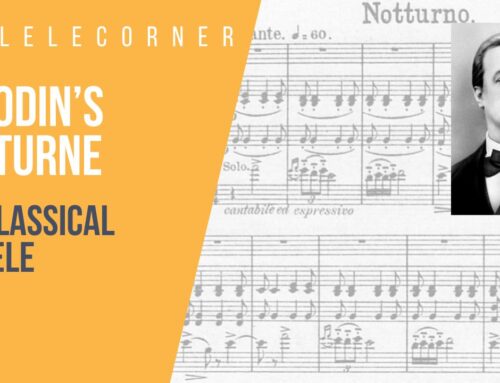An important element in learning ukulele is developing your ability to listen while you play on ukulele. This seems obvious of course but takes some focused practice to develop over time after the basic fundamentals of technique take shape. The first steps are to get in tune(use a tuner!), get your fingers working, learn a few chords or basic melodies, and start to develop a sense of timing and rhythm. Once these basics are covered, you can start the exciting process of using your listening skills while you play.
Let’s be clear
The first thing to listen for is clarity of pitch. If you hold the C note down on the 3rd fret of the 1st string, is it ringing clearly? What is your tone like? How does the way you play with your right hand change the tone? Try using your thumb, flesh of the finger tip, nails, play near the bridge, play over the neck, play with more or less force. All of these things will affect your sound and your ear can be trained early on to help you play with the tone that you prefer.
Feel the groove
After some practice you will learn some songs, scales, melodies, chord progressions, and even solo arrangements. You can now try playing with a metronome. (New to the metronome? Go check out our guide here on how to use a metronome!) This is a huge challenge at first because you will need to not only listen to the sound you are creating but also another sound entirely from the metronome. Keeping in sync will require focusing on two things at the same time. Tapping your foot along with the metronome will help you “feel” the beat. You may feel like your metronome if broken or changing tempo but that is probably not the case! With some practice you will be right “in the pocket” playing along in perfect sync.
Listen!
I highly encourage all of my students to learn music using recordings once they have a basic understanding of fundamentals and start learning songs. This is even more involved than just the metronome because you can listen to many elements of the recording. If it is a band you can focus on different instruments (ukulele, bass, drums, guitar, voice, ect.) If it is a solo ukulele recording you can focus on tone, phrasing, dynamics, and interpretation. There is so much to hear beyond what you see on the page. You will learn to play with balance with the other parts. Are you playing accompaniment behind a vocalist or soloist? Does your part need to come out more to cut through the rhythm? How is the balance between melody and accompaniment when you play a solo piece. Are your dynamic and tone changes clear? Developing your listening skills while playing will help you decide.
At the Ukulele Corner Academy I included video lessons to learn from and play along with as well as backtracks to many songs. You can slow down the tempo in the video player to start slowly before working things up to tempo. It is a fun and engaging way to learn that will help you bring out your full potential and also to play music with others with more confidence and ease.
Aloha,
Jeff Peterson




Leave A Comment